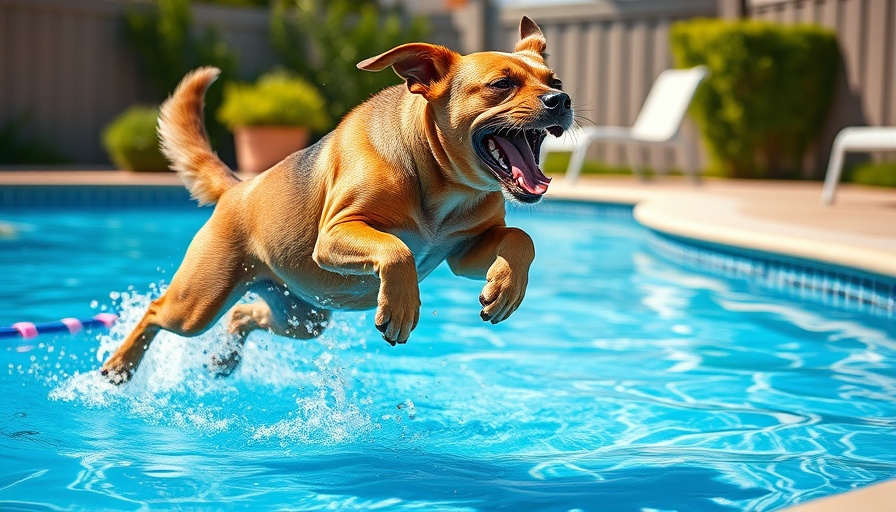
Why Teaching Your Dog to Swim is Essential
Every summer, thousands of dog owners head to the nearest pool or beach, eager to share the joys of water with their canine companions. However, not every dog enters the water with confidence, and teaching them how to swim is not just about fun—it's a critical safety concern. Estimates show that around 10,000 dogs drown annually in the United States, often due to lack of swimming skills and supervision. Understanding the basics of swimming can not only protect your furry friend but can also keep their spirits high and provide you both with moments of joy during hot days.
Physical and Emotional Benefits of Swimming for Dogs
Swimming is more than just a fun pastime for dogs; it serves a multitude of health benefits. For dogs with physical ailments, such as arthritis or obesity, swimming provides a low-impact exercise option. The buoyancy of water alleviates pressure on joints, allowing them to engage in aerobic activities without discomfort. Equally, for energetic dogs, swimming can serve as an outlet for excess energy, keeping them content and well-exercised.
Notably, many trainers utilize swimming as part of performance dogs' conditioning regimens. Competitors in agility, flyball, and tracking often incorporate swimming into their fitness routines. As veterinarians and trainers affirm, regular swimming can enhance their physical condition, making it easier for them to perform at their best.
Does Your Dog Enjoy Water? Understanding Their Comfort Level
Every dog has unique preferences and fears. Some dogs may take to the water, while others, like the aforementioned Myles, might hesitate to even dip a paw. Among breeds, short-necked, large-chested types such as Bulldogs often face challenges in swimming. Observing how your dog reacts to water is key. If your dog shows reluctance, it's essential to proceed cautiously and patiently.
For dogs hesitant about swimming, encouragement through toys and treats can help build confidence. Discovering your dog's natural affinity or aversion is crucial in determining the right approach. It's often a rewarding journey to see a timid dog gradually embrace the water, showcasing their new skills alongside the joy of the bond deepening between owner and pet.
Safety First: Rules to Follow When Teaching Swimming
Implement strong safety practices when your dog is swimming. As professionals advise, never leave a dog unattended near water. Establish a designated swimming area with a clear exit path, like steps or a ramp, to allow your dog easy access back to dry land. A pet-friendly pool fence or alarm system adds an extra level of safety.
Introduce your dog to water gradually, ensuring they are comfortable before moving on to deeper areas. Maintain a calm demeanor, as dogs can pick up on their owner's anxieties. If your dog seems unsure, do not push them beyond their comfort level. With time and patience, they can learn to love the water just as much as you do.
Future Opportunities: Making the Most of Your Dog's Swimming Skills
Once your dog is comfortable with swimming, numerous opportunities for fun and bonding arise. Consider joining local dog-friendly swimming sessions or recent rescue organizations that incorporate water play into their activities. Such interactions provide not only exercise but are also opportunities for socialization with both humans and other pets. For avid travelers, research pet-friendly destinations that offer amazing swimming spots for dogs, ensuring your adventures continue to foster a happy and active lifestyle.
Conclusion: Embrace the Journey with Your Dog
As you embark on teaching your dog to swim, remember that it is a remarkable journey of patience, training, and bonding. The end goal is not only to ensure their safety but also to create unforgettable experiences together. Embrace each little victory—from gaining confidence to mastering that perfect doggy paddle. They say that time spent with pets is never wasted, and what better way to build lifelong memories than by splashing together in the water?
 Add Row
Add Row  Add
Add 




 Add Row
Add Row  Add
Add 


Write A Comment